EBR charges a service fee to manufacturers to produce ebike reviews and videos, this began in 2018. It’s the same flat fee for each bike, and it helps us to keep the site going while limiting ad clutter. We appreciate the opportunity to serve you with our opinions and data but respect your right to know that we receive compensation :)
Hello, my name is Mikey, I’m a contributor for EBR. I’ve worked for 5 years in electric bike media publishing and retail. This is my first EBR review in awhile, thank you for joining me! The Fantic XF1 Integra 160 has some great features and build quality that help it stand out from the average EMTB crowd. One of the first electric mountain bikes with a larger 29” front wheel (affectionately known as 29er) and a wider width 27.5 inch rear wheel (known as a plus size 27). The mostly integrated battery is more securely attached than most bikes, and the very capable electric and mechanical system make this an awesome choice for high-adventure mountain biking. If the name is familiar, Fantic is the same Fantic that has been making dirt bikes and motorcycles for quite some time. With Italian heritage, Fantic also has a healthy line of electric bikes, such as their Gravel X reviewed previously (https://electricbikereview.com/fantic/gravel-x/) fat tire off-road cruisers, smaller size bikes, and quite a few options in their Integra line. This particular bike is the XF1 Integra 160, they also have the 180 R model, which has higher mechanical components, as well as the 140 model which carries a lower mechanical component group. With the tested 160 model being right in the middle, I’m confident you can get a sample of what to expect from either one level higher or lower. At the moment Fantic has somewhat limited dealer base, but that will be increasing in the future. Hopefully you can find one represented in a store near you, but in my case I found Blaine, a Fantic brand ambassador who let me ride his personal bike in order to track down this elusive model (elusive in my area, at least).
First and foremost, the Fantic XF1 Integra 160 has an innovative feature that I became quite fond of after riding it: two different wheel sizes. The front is a 29 x 2.4, tall skinny MTB tire, and the rear is a 27.5 x 3 chubby MTB tire. Why? Taking a cue from the industry standard of dirt bikes and motorcycles (that Fantic is known for), the larger front tire aids in clearing obstacles on the trail. The opposite extreme would be trying to propel a scooter wheel up the trail; the wheel would have no clearance. On the rear of the Integra 160 is the smaller height, and larger width 27.5 tire, which keeps grip on the trail. The opposite of this would be using an ice-skate on an off-road surface; the skate would only pierce into the dirt. So what you have on the Fantic is a noticeable optimization of a wide rear tire that better utilizes rider input by keeping grip, and a tall front tire that can maintain speed and balance by rolling over bumps on the ride. The dual-suspension system on the Integra 160 is perfectly capable of both keeping comfort and also keeping surface area on the trail. With both the advantage of the wheels and the suspension system working passively; it makes for very comfortable, controlled and sturdy eMTB ride. I really like this direction they’ve taken in designing this bike. There are some eMTBs that are loaded with features, some of which can be distracting when attempting to take in the scenery or the challenge of a ride. I once rode a mini fat bike with an over-volted throttle, fenders, turn signals, a front rack and a cycle-analyst computer that unfurled the entire active specs at any time. It was a fun ride, but I couldn’t tell you much about where I was or what I saw.
The 160 is equipped with SRAM components; specifically the GXe shifter and Guide RE 200mm brakes. Like a lot of eMTBs, the Fantic 160 has a wide gear range in the rear; 11-42 teeth. Having such a large range on only one side of the bike can increase long-term flex on the chain from changing gears too rapidly, but the new designation for SRAM GX “E” (“electric”) allows the shifter to only index one gear at a time, thereby reducing the risk of added wear and enabling the motor to maintain predicable power delivery. I like the idea of this feature. It was a little bit distracting when approaching a traffic light, but once off-road I appreciated the predictability it gave me using the Brose-S motor. This “e” designation for the SRAM GXe shifter is not a competitive feature with Shimano’s Di2 electronic shifter, which is a different animal that uses tiny electronic motors to move the derailer arm; a very different purpose than the SRAM GXe. The large 200mm brake rotors on the front and back provide great stopping power, and the overall weight of the bike seemed quite proportionate for the brakes. I found the brakes to be great for the ride we did, though we didn’t get the chance to ride anything terribly technical on the downhill side. I found myself spending more time focusing on what kind of obstacles I could climb on top of, given the wheel size aspect I really wanted to test. The two-finger levers work well for my hands, and the balance of the bike was nice enough that I didn’t have to over-compensate by shifting my weight any more than I do subconsciously. I’m not going to name names, but I’ve been on some eMTBs that are far too heavy for the brakes they provide; leading to a very unsettling descent. Switching from uphill to downhill was made easy with the dropper seatpost using an intuitive shifter for the trigger. Since the bike is using a single chain ring up front, the left side of the handlebars can house the underside lever for the dropper post, making the handlebars look really clean. The seat itself is a leather wrapped foam seat with varying finish on the face: a glossy nose and a felt lined rear provide some texture and hint towards a finer purchase on the rider’s backside. The seat is great for mountain biking, but I can’t say for certain if I noticed the varying texture while riding. I found the engagement for gearing to be clear-cut and very reliable with the SRAM GXe indexer and the skinny/fat teeth on the front cog. The bike I rode was a bit customized; with a tubeless tire set-up and aftermarket pedals. Both of these upgrades are quite common, pretty much encouraged by the manufacturer. Tubes are easy to get started and quite invaluable for the shipping process and bike is shipped with plastic/metal platform pedals with reflectors.
Electrically, the XF1 Integra uses the Brose-S mid-drive motor for smooth and quiet power delivery. With up to 90nm of torque, the motor is well equipped to handle high inclines and deliver enough umph to showcase the wheel set advantage. With both a quiet motor, and an integrated battery, the XF1 is certainly more clandestine than a resting battery and noisier motor found on some Bosch or Yamaha powered bikes. At the moment, a common battery size is a 500Wh battery, but the Fantic XF1 Integra is using a 630Wh battery right out of the gate. With this size of battery, you’ll be seeing considerable increase of time the bike will operate in any conditions. The battery will likely last longer (much longer) than most riders want to be on a bike seat. This large capacity battery is held in by a system I’ve not yet seen before on an electric bike: a thick bolt through the case of the battery. Instead of a keyed system, Fantic is using a 4” bolt with a 6mm hex head to secure the battery firmly in place on the frame of the bike. This does pose a security risk for folks intending on using the bike as a commuter, but this bike is very obviously built for a different purpose. The securing bolt does actually hold the battery in nice and tight, which is a very simple solution to a problem other bike companies have faced. It’s common for eBike dealers to be equipped with spacing tools to properly fit a battery mount onto a bicycle, and there can still be some play in the battery from time to time. This solves the problem at the expense of using a key, which for this kind of bike is A-O-K. The bike includes a faster 4 amp charger, (twice as fast as many chargers) which should keep the total charge time to under 4 hours. This is a great feature if you need to top off the battery to ensure a longer ride. The charger also utilizes a magnetic tip that will attach to the battery itself, which helps to eliminate user error in charging the battery.
The bike is equipped with the electric display/control module called the Marquardt. It’s a very sleek system that provides basic electric information at a quick glance, and has a host of buttons to navigate the limited functionality. In my opinion, this is one of few weak points of the bike. The information it provides is great; I really like that it has the basics on display without getting too detailed. However, the built in switch for operating the electric controls are very tightly cornered with the grip. In this orientation I was adjusting pedal assist with the top of my fingernail. Of course, the switch/display can be moved further down the handlebars, but then the other features are put out of easy reach. It’s a perfectly usable solution, since most of the added information I would examine at a stop anyway. I do appreciate the sleek design of the handlebars though; it looks amazing. The namesake of “Integra” specifically refers to the integration of the battery, but I appreciate the un-cluttered handlebars, the casing around the rear dampener and the tilt of the motor that help make the ride more about the ride, and less about the equipment.
The color scheme of the bike was pretty slammin’. Using black and white as a base, it uses red and blue stripes to give the bike a race look. The dash of anodized red parts help to break up the all-black look of the front and rear. As a mountain bike, the front end is raked out for technical riding characteristics, and the large front tire makes this feature appear more aggressive than it actually is. Knowing the history of the brand, and the care that has been made to design a great bike; I’m more than comfortable with the brand name being prominently displayed on the battery. Aside from the grunge-layer graphic on the handlebars, the cockpit is really clean; the absence of shifter indicators, center displays, a second set of shifters or remote grip buttons really give this bike a clean feeling on top of the clean look.
Overall I think the Fantic XF1 Integra is a very good eMTB with very few shortcomings. It’s a very intentionally designed bicycle with lots of passive features that make riding off-road more enjoyable. The differing wheel size is a great feature, and I believe we’ll be seeing more bikes like this in the future. The secure integration of the battery, and the boastfully quiet Brose-S motor are a great pairing for such a naturally riding mountain bike. A big thanks to Blaine, for making this ride happen by letting me use his bike for this review and big thanks to Fantic for partnering with me on this post. He was a great help on the review providing more detailed specs and company history as well. I’m always happy to contribute to EBR when the situation permits. I enjoy reading your comments and discussion here and in the Fantic electric bike forums!
Pros:
- Larger front and smaller rear wheel bring more technical control and grip to the emerging eMTB sport. This carry over from Fantic’s motor sport endeavors is a welcome improvement in electric bicycles
- The large 29er front wheel feels great to charge through the trail with less stress on the rider to rind a perfect path, allowing more room for error for new cyclists, and allowing faster, more aggressive rides for experienced riders
- The smaller 27.5 wheel with the 3” wide tire allows great traction and maintains balance on the trail. Less of a worry to spin out from weight distribution problems or incorrect line selection
- 160mm travel front and rear dampener provide great control and comfort on both up and downhill rides. The integration of the rear suspension keeps a clean look that matches the flow of the bike
- SRAM Guide RE brakes bite very well and have great longevity. The 200mm rotors on the front and rear have great heat dissipation that reduces wear and risk when encountering long descents
- Quick release front and rear hubs allow for easy changing of tires/tubes. The lack of fenders make this an easy bike to break down into a vehicle
- Brose-S motor provides a leading 90nm of torque, and the internal belt system maintains smooth and whisper quiet power delivery
- Custom motor casing prevents damage or wear to the underside of the motor unit
- The 36v 17.5Ah battery (630Wh) will provide a very long ride time, more than I personally want to be sitting on a bike seat
- The mostly integrated battery is secured, quite tightly, by a large bolt. The lettering on the battery helps to utilize the physical space exceeding the frame casing
- Quick 4amp charger, even for the large battery capacity, is a great feature that reduces down time between rides
- Wide handlebars allow for better control in technical areas, clean cockpit gives more focus on the trail
- Backlit display/control module shows the essential electric and ride information
- Hydro-formed aluminum frame provides great strength, weight and cost value
- 2 year comprehensive warranty includes electric system and battery pack
- Dropper seat post with indexer lever hides well on the clean handlebars. Dropper post enables smoother transitions between climbing and descending
- Branded lock-on grips won’t slip or rotate after sweaty rides or extended use
Cons:
- The latch between the battery and the bike is not ideal. I realize the priority was to ensure a secure attachment, but this leaves the job of taking the battery on and off clunky and requiring two hands
- The display has quite a bit of functional buttons, 9 in total, but the readout is so small that they seem hardly necessary
- The battery doesn’t lock into position on the bike, leaving it exposed if used in a street environment where thieving hoodlums have access to a 6mm hex tool
- No existing provision for a water bottle mount
Resources:
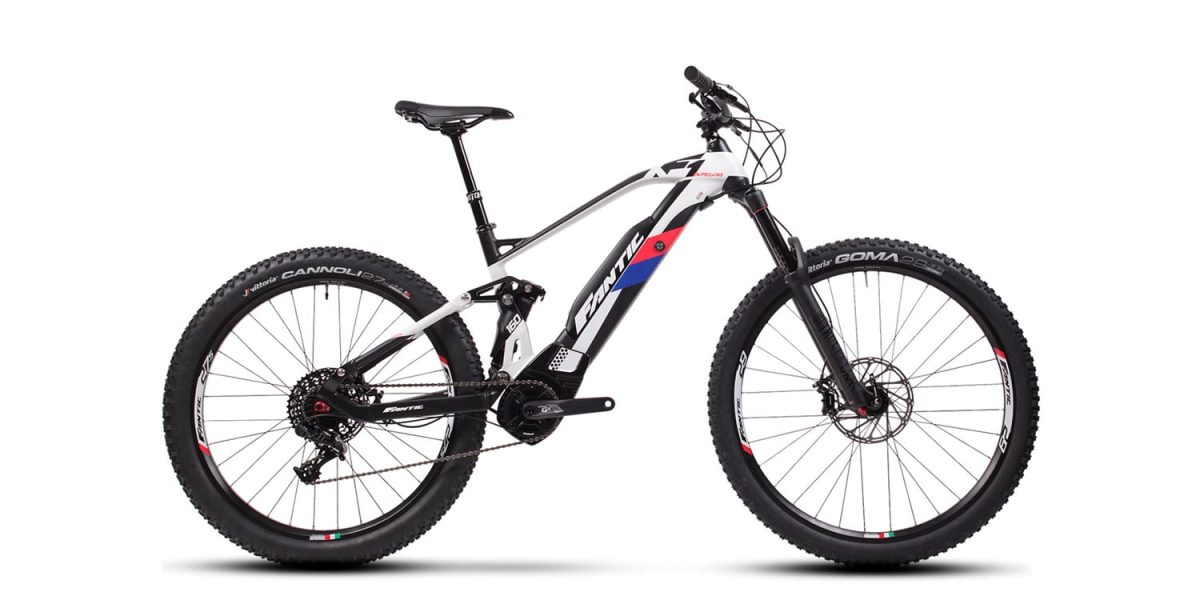




















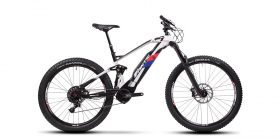
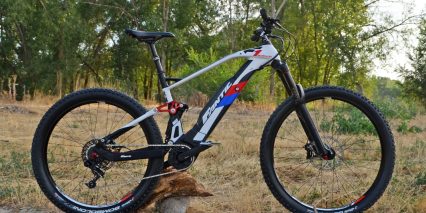
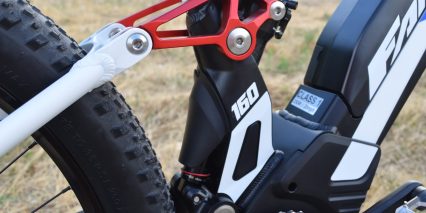
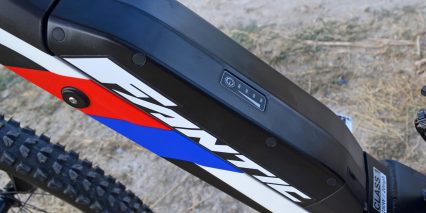
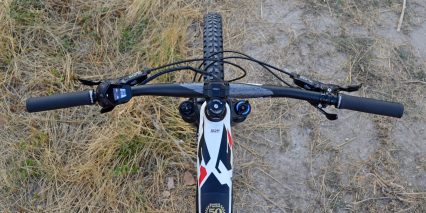

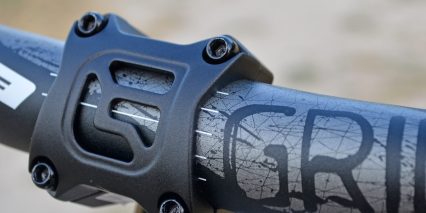

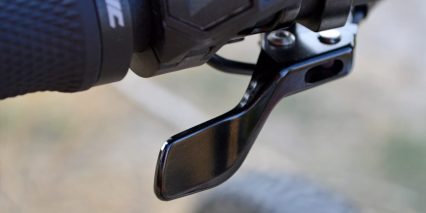
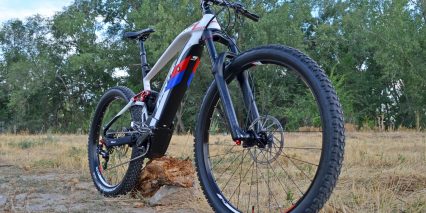
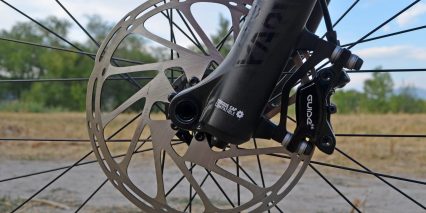
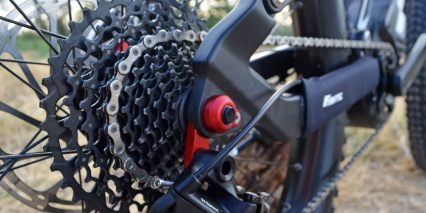
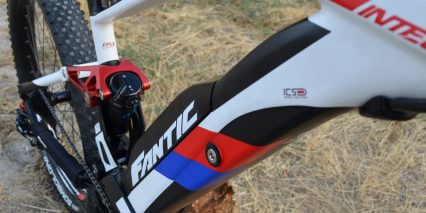
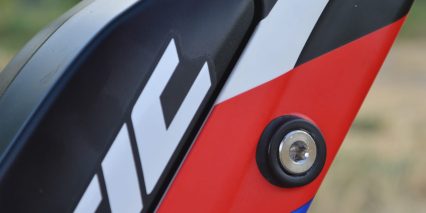
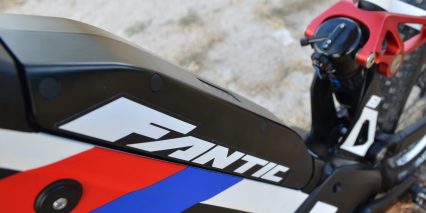
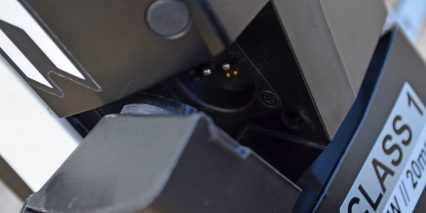

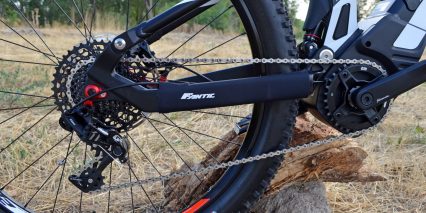
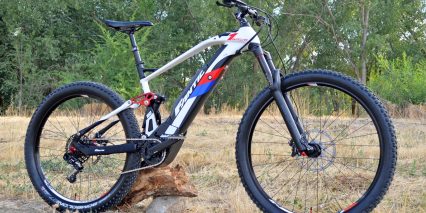



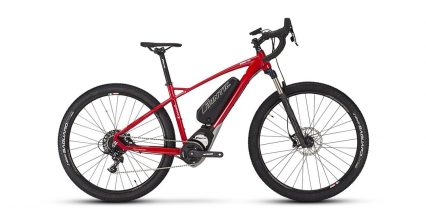
john stewart phelan
4 years agoI have the fantic XF2 fantastic ride/range was bought as a stopgap prior to delivery of Haibike flyon 6 which at over £1000 dearer is crap in comparison,too cluttered too heavy, battery near impossible to remove without a bikestand. Will nearly always ride the fantic.
ReplyCourt
4 years agoHmm, thanks for the feedback John! I was pretty impressed with the Fantic models I saw, and haven’t ridden most of the new Haibikes yet. Thanks for the update :D
ReplyMichael Eales
3 years agoHello I’m looking for information on the FANTIC XF1 160R Enduro, what does the (R) Really get you verses just the XF1 160 Enduro and what if any upgrades have they made for the 2020 XF1 160R Enduro vs this 2018 XF 160 Enduro. Thanks for looking into this great review.
ReplyCourt
3 years agoHi Michael! I’m not super familiar with the Fantic line, and my time is a bit limited to dig into the nuances between the R and XF1 for you right now. Perhaps someone else will chime in, or you could ask in the Fantic forums here. Good luck!
Reply